From Walkman to PSVR 2 - Sony's history of immersion
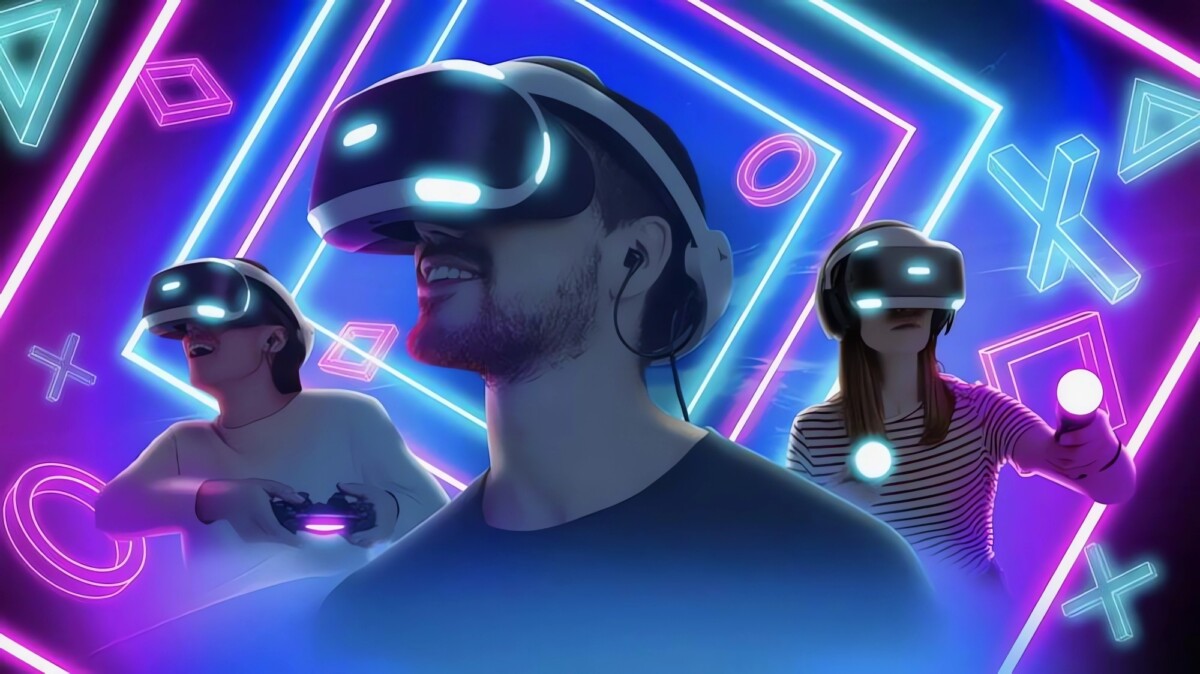
The application of XR across the entertainment landscape is covered by industry specialist Kevin Williams in his latest Virtual Arena column. He takes a unique look at the roadmap that has brought Sony to the point of launching one of the most innovative new VR headsets in a market full of innovation - and exclusively charts the stepping stones to get there.
Author: Kevin Williams
In this latest column for MIXED, we look at the real history of Sony Consumer Electronics into the virtual world. While many may think that the launch last month of the ‘Sony PlayStation VR 2’ is only their second foray into the immersive headset market. There is a rich history of investment into offering a personal viewing media platform that has culminated to this point.
Content
Sony Walkman: immersive audio on the go
The ability for mobility of media consumption has been an underpinning focus of Sony, the electronics giant has sharpened its development might, first with the creation of a range of personal viewers, moving from passive consumer content, to placing the user within a virtual environment. To understand the mindset that drove this investment, we need to understand the roots of the development within the Japanese corporation that has defined consumer electronics for so many years.
The early period of adoption of portable media systems was championed by the massive success of the portable cassette player – personified by the ‘Sony Walkman’ platform. Developed at the request of the corporation’s co-founder to create a means to listen to his classical music while traveling. Sony R&D would cobble together a concept that would go on to become the iconic ‘Walkman TPS’, in 1979. A concept that would go on to launch a range of portable players that would see sales of some 300 million units over 30-years.
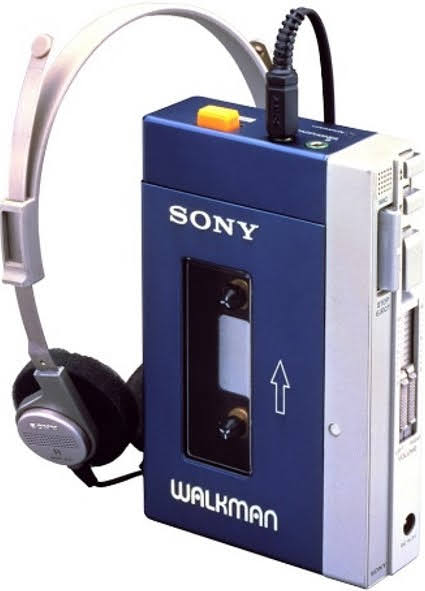
Sony's Walkman | Bild: Sony / KWP
Portable media consumption moved from audio to video; with sales of portable TV’s being popular with the Japanese audience. But there was an idea to offer a more personal means to consume video, achieving the same approach that the Walkman headphones allowed for audio. And so, the move towards personal viewer technology was started.
Sony’s first video headset
In 1992 in Japan and a year later in the West, Sony Corporation would release the ‘Sony Visortron’ – what would be described as a head-mounted type of display (HMD), a means to consume high-quality images from its non-stereo, LCD (liquid crystal display), able to act as a television receiver – simulating as if viewing a “33-inch TV from four feet away”, as promoted in a review at the time by Popular Mechanics.
The platform was envisaged as a personal television, as well as a personal movie screen – even seeing the unit offered to passengers on long-haul flights by Japan Airlines.
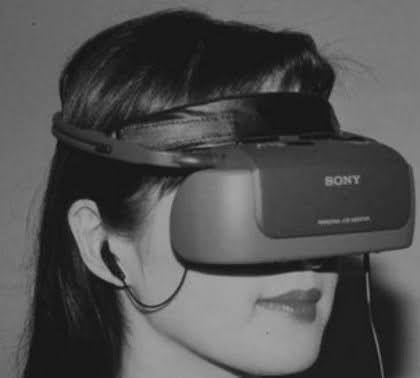
Sony Visortron | Bild: Sony / KWP
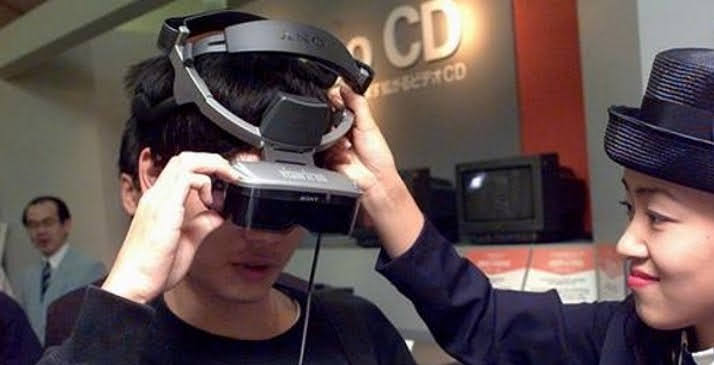
Sony Glasstron | Bild: Sony / KWP
At this time, the concept of virtual reality (VR) was becoming the new zeitgeist. 1992 had seen the first mainstream fumbles with cumbersome and hugely expensive technology. Over the period from being first confined to the laboratory, the technology had progressed to rudimentary amusement applications.
Sega does not offer a good VR role model
Soon after attempts were made to create home versions of VR technology that first offered personal gamer viewers, and then attempted basic head tracking. These first flushes of consumer interest would eventually collapse as over ambitious marketing men sold concepts unable to be achieved with available technology – such as with the aborted ‘SEGA VR’ headset, revealed in 1993.
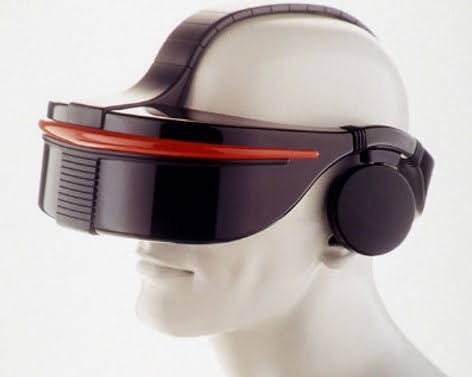
Segas concept VR headset. | Bild: Sega / KWP
While other’s attempted to emulate the experience gained in display technology, Sony would condense their R&D into its own dedicated range, launching the ‘Sony Glasstron’ range – first with the PLM-50 in 1996. The head-mounted personal LCD monitor, as it was now branded, offered a “Personal Viewer” capability.
After a second release, innovation and new technology would lead in 1998 to the ‘Sony PLM A55’, and then ‘Sony Glasstron Lite’ range. Sleek and compact, the personal LCD monitor offered a perceived 52-inch screen in front of the user. The system was able to be married to the latest Sony DVD players, and home game machines. At this point, the personalized viewer moved into the interactive entertainment realm, as a companion to PC and video game systems.
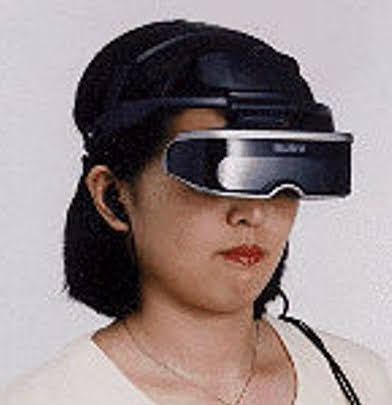
Sony Glasstron PLM-50 | Bild: Sony / KWP
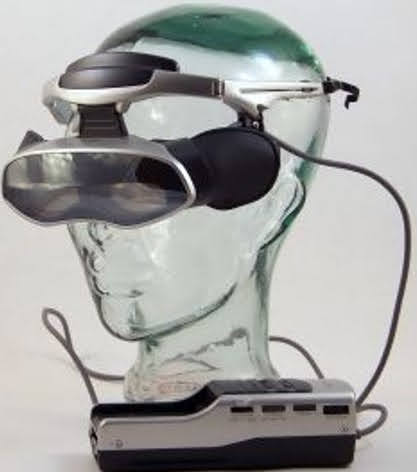
Sony Glasstron PLM-S700E | Bild: Sony / KWP
First tech glasses for business
With the launch of the new ‘Sony LDI-100B’ in 1999, the new range of LCD panels allowed Sony to offer a 3D stereoscopic video system – and now not just consumers, but commercial clients, could benefit from this application.
The use of the display system in medical visualization, and even design and architecture applications started to take place. But also, at the same time, the system found its way into international technology labs, and started to be married to rudimentary tracking technology in the re-emerging virtual reality visualization scene.
The range of Sony personal viewers had already been hijacked by scientific and research groups to be used in homebrew VR installations. Offering a more cost-effective (and lightweight) HMD solution to the then expensive commercial VR had-mounted displays.
Though aware of this, Sony R&D was still firmly on the fence regarding the support of VR, management preferred to back the simulation and training deployment, as with their LDI and PUD range of headsets. The ‘Sony PUD-J5A’ series, launched in 2002, also included the ability to be connected to the PlayStation 2 games console, to enjoy the virtual space.
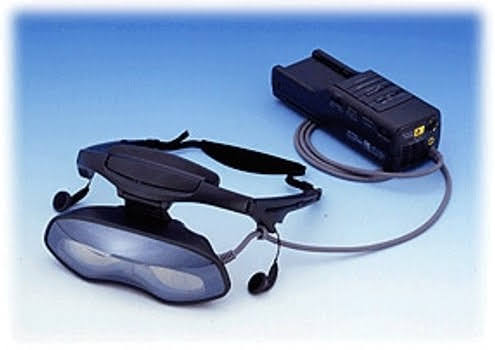
Sony LDI-100B | Bild: Sony / KWP
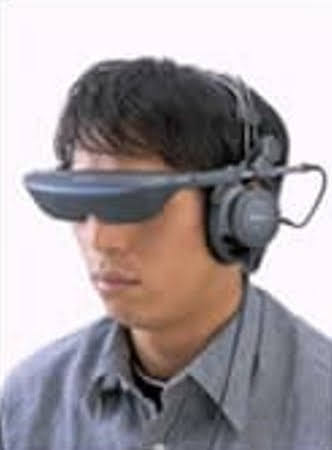
Sony PUD-J5A | Bild: Sony / KWP
With continued innovation and technological advancement, Sony would take the biggest step towards a truly immersive viewing platform. While finding it difficult to establish their plans for the "Sony Personal 3D Viewer" concept in 2011.
Sony approaches VR
3D had proven a vexing consumer medium to establish in the mainstream, the innovative technology of OLED and a compact design was appealing, but the high sticker price and limited content was not. With a supreme effort the concept would be rolled out as the ‘Sony HMZ-T1’ range, (offered a perceived 150-inch screen in front of the user). And then followed in 2012 with the ‘Sony HMZ-T2’.
At this point, Sony management still saw this technology primarily as offering the user their own “private movie theater” – the consumer selecting from their favourite movies. It would be interesting to see in the future, VR users embracing this element of headset usage, with the popularity of VR apps like the ‘Bigscreen’ virtual theater. But for the Sony HMZ in 2012, beyond being a personal 3D viewer, a new life beckoned for this technology.
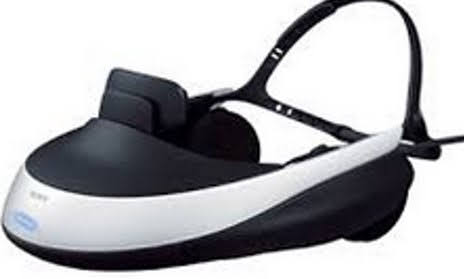
Sony HMZ-T1 | Bild: Sony / KWP
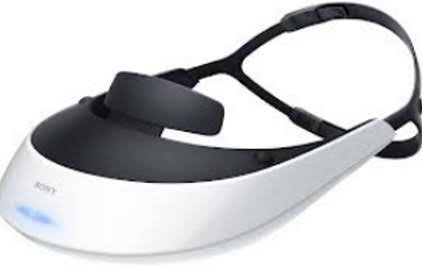
Sony HMZ-T2 | Bild: Sony / KWP
Sony R&D worked with several industrial partners, looking at the application of this technology as a virtual world viewer, incorporating an early application of pass-through technology. Sony in Japan would go on to demonstrate their ‘Sony HMZ-T2 Prototype-SR’, mounted with a camera passing video to the headset display, able to create the first advance mixed-reality experiences. Still a prototype at the time, this concept opened the door on Sony embracing a dedicated VR future.
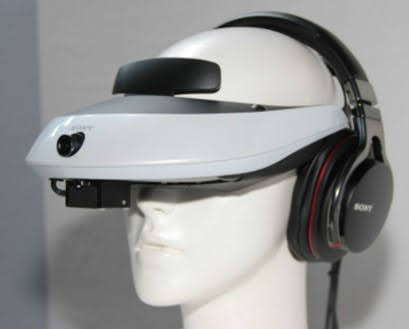
Sony HMZ-T2 Prototype-SR | Bild: Sony / KWP
Even while in 2013, there would be a ‘Sony HMZ-T3W’ personal viewer, also supporting a commercial / medical version, but the world had changed. Attempts, in 2015, to launch the ‘Sony SmartEyeGlass’ platform, trailing AR-based smart glasses technology, with a personal viewer inspiration, fell flat. By this point, all eyes were turned towards VR.
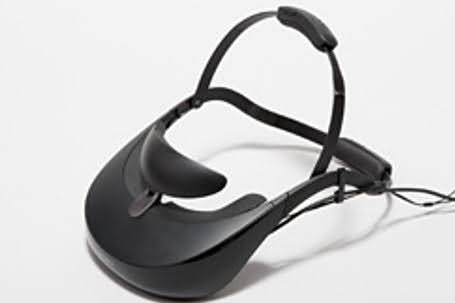
Sony HMZ-T3W | Bild: Sony / KWP
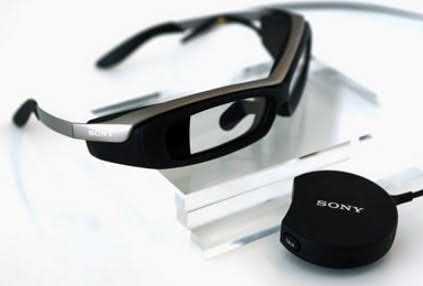
Sony SmartEyeGlass | Bild: Sony / KWP
A new summer of VR - and Sony is part of it
By this time, the wave of excitement and anticipation in virtual technology had been spurred on by sci-fi novels like ‘Ready Player One’ being published. Small startups were once again embroiled in homebrew VR headset development, but this time Sony wanted to be a leading part of this, rather than sitting on the side-lines. A dedicated joint R&D team was established, based both in the UK and Japan, run by Sony Computer Entertainment, as this VR tech was to support their gaming platform.
Numerous test articles had been developed from 2010 to 2013 from the Japanese and European R&D enclaves, kludged Frankenstein iterations of what was perceived was needed to be able to field a console companion VR system. A system that would also have to include the temperamental ‘EyeToy’ (but profitable) console peripheral tracker. A compromise to achieve the envisaged low price felt needed to find a market.
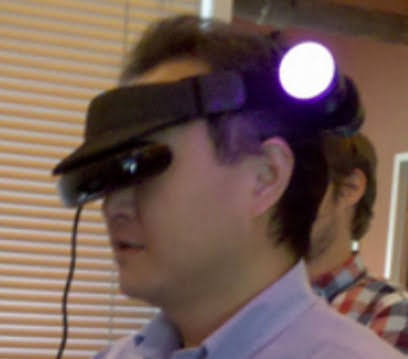
Sony VR Test Article 1 | Bild: Sony / KWP
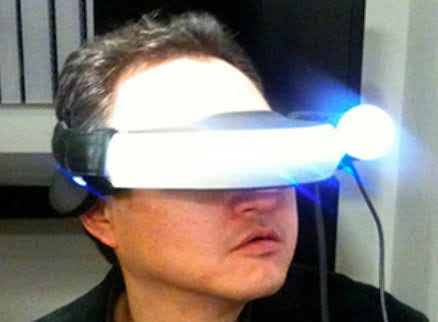
Sony VR Test Article 2 | Bild: Sony / KWP
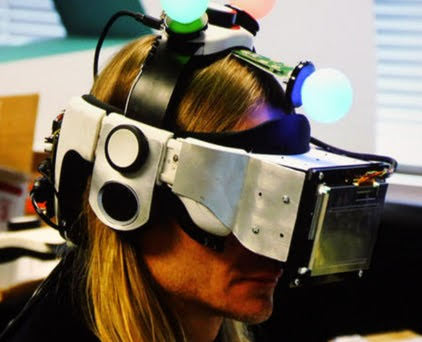
Sony Playstation VR Prototype v1 | Bild: Sony / KWP
In 2014, the first test articles of what was now known as the ‘Sony Project Morpheus’ prototype were presented to selected media representatives, and game publishers. And while the clamor for VR grew, Sony positioned themselves for the release of the final ‘Sony PlayStation VR’ in 2016. Not just a VR headset technology, but a complete business initiative supported by a library of games.
From Morpheus to PSVR 2
Innovative and unique in many approaches, the system bore the hallmarks of its illustrious predecessors, many of the lessons learned about comfort, fit, ergonomics and the unique aspects of anthropometrics, embodied in the final system.
The headset would go on to see sales internationally by 2019 of some 5 million units as reported by the corporation. Placed in perspective, some 104 million PlayStation 4 consoles would be sold during the same period. But this initial interest in VR started the drive towards creating the successor to this first dedicated foray into VR.
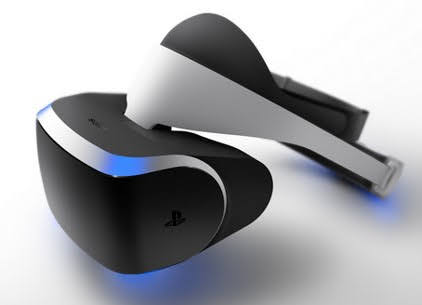
Sony Project Morpheus Prototype- A | Bild: Sony
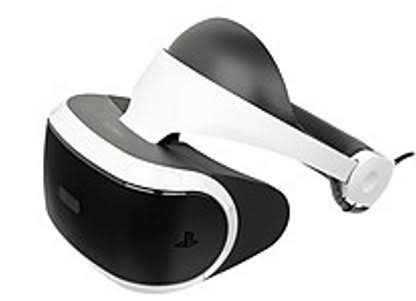
Sony PlayStation VR | Bild: Sony
Sony would gather all its VR development on a dedicated Japanese division, closing and disbanding the original UK teams. Now focused on creating a dedicated VR headset with no compromise regarding the tracking. The new design would include inside-out tracking to be employed, and a new OLED lens configuration. Constantly striving for the best performance, Sony would even tease a prototype in 2021 offering an 4K display performance.
But the reality would be a more manageable solution with 2000 x 2040 OLD screens, increased form factor, and usage of innovative tech such as eye-tracking, and haptic feedback in headset as well as controllers. All this and a simple single cable tether, for ease of use.
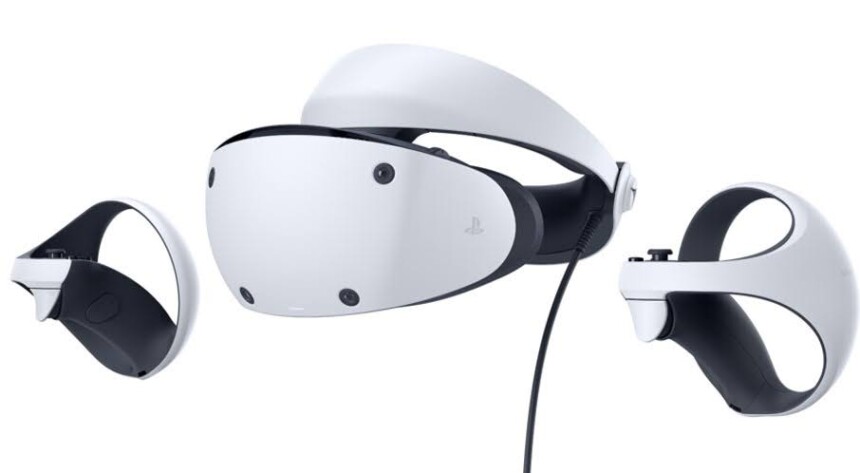
Sony PlayStation VR 2 | Bild: Sony / KWP
So, in 2023, and the international consumer game scene saw released the ‘Sony PlayStation VR 2’, while being the second dedicated VR headset from the consumer electronics manufacturer. It is a system that can trace back its ancestry over nearly sixteen different products.
Conceived first as personal viewers in the 1990s – but have amassed the skills needed to create such a powerful virtual viewer in such a small package. The launch of the PSVR 2 incorporates many elements that clearly stem from the original ‘Sony Visortron’ some thirty-years ago. Now we wait to see if this incredible investment in research and development over such a long period will pay off in mainstream adoption.
To learn more about the evolution of VR, see our comprehensive history of virtual reality.
Note – The author would like to thank all those that helped in compiling this feature. Please understand that the dates given in many cases are the Japanese years of launch, though some Western schedules may also have been included. Also limited run prototypes, or special production runs may have been omitted.
Note: Links to online stores in articles can be so-called affiliate links. If you buy through this link, MIXED receives a commission from the provider. For you the price does not change.